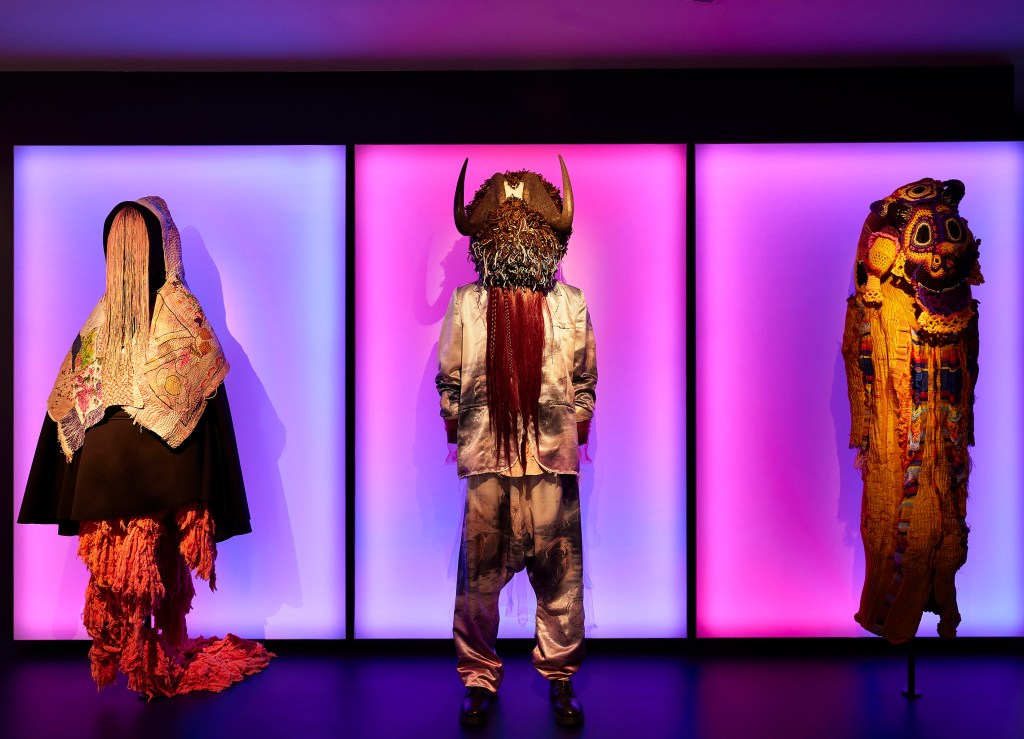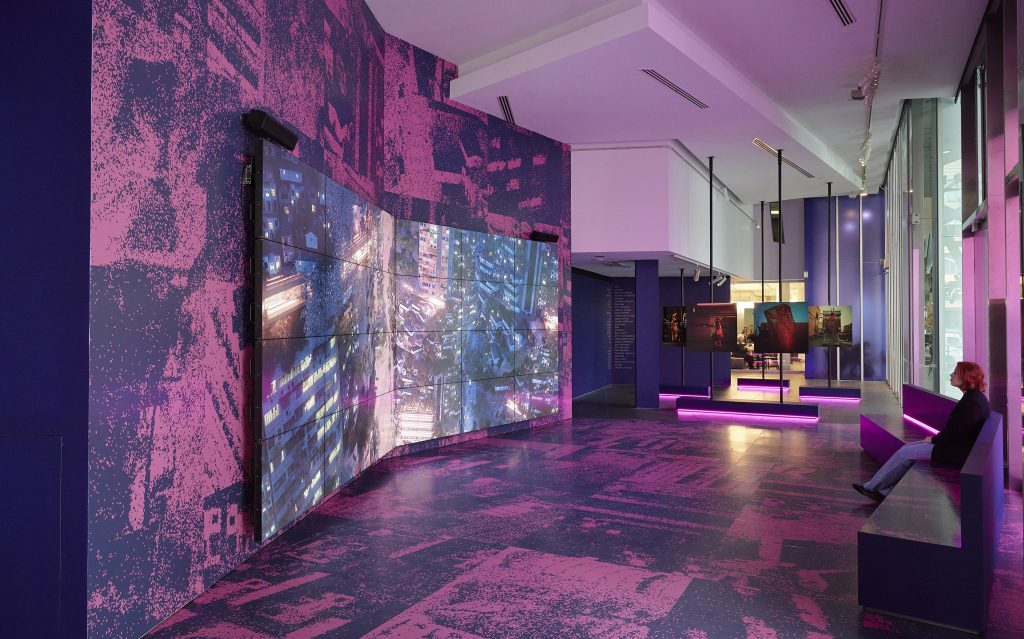The Bureau of Meteorology recently declared that an El Niño is underway in Australia. This doesn’t just mean “a hot summer” (as many in the comments section of the news announcement would like to suggest), but a summer of extreme heat, lack of rainfall and “catastrophic” fire danger.
It’s events like these that send an urgent call for drastic, widespread change, rather than – though still important – individual or incremental efforts. In Liam Young: Planetary Redesign, the designer, director and film producer presents some ideas on what a reimagining of our planet in response to the climate emergency could look like.
The exhibition includes a major National Gallery of Victoria (NGV) commissioned project Planet City (2016) that speculates about the possibility of Earth’s entire population thriving in a sustainable city, whereas the rest of the planet undergoes “rewilding”.
Previously on display in the 2020 NGV Triennial, Planet City involves an expansive and imaginative video work that brings to life a beckoning Utopia. Residential buildings can be seen stacked in high density on floating mountains. Instead of chaos, the work displays harmony in co-existence, evoking a sense of beauty and awe. The mysterious and eye-catching figures that feature in Young’s video are also captured in a series of photographs, which exemplify each of their roles and significance in the new ecosystem.
Costume designer Ane Crabtree’s handiwork aesthetically grounds and extends the reality of Planet City, alongside zero-waste mask artist Zac Monday who created the distinct garments in myriad distinct and imaginative forms.

Young’s world-building in Planet City is mind-blowingly comprehensive, down to the heads of lettuce (684,931,530) and birthday parties per day (23,310,023). Despite the population’s physical proximity, Young suggests that differences would be embraced in this new way of life. There are 7047 languages spoken (currently there are believed to be between 6000 and 7000) and 2555 cultural festivals and holidays celebrated.
A second major pillar of Liam Young: Planetary Redesign is a new work, The Great Endeavor (2023), aimed at addressing greenhouse gas emissions. The piece is informed by extensive research, conversations and data available on our climate crisis. Two booths show documentary footage with researchers highlighting the issue of our current agricultural practices and inefficient resource management. One documentary video featuring Dr Christoph Gebald, CEO and Founder of Climeworks, maps out the urgency and possibility of carbon monoxide removal, as reduction is simply no longer enough to achieve climate change targets.
The central film located in the furthermost gallery space pieces these real-life examples together and blows up the result to monumental scale. The Great Endeavor is as much an engineering feat that will change human history, as an artwork that provokes reflection with awe-inspiring visuals and an ethereal score by Lyra Pramuk. Crabtree again offers her talent in the uniform design for a global workforce tasked with building this carbon removal and storage facility, showcasing repurposed jumpsuits with varied textures and intricate embroidery.
Read: Exhibition review: Beneath the Surface, Behind the Scenes, Heide Museum of Modern Art
The clever inclusion of climate data displayed on video screens prior to entering the space for The Great Endeavor delivers some sobering facts about the current social and political attitude towards our climate crisis. Viewers may enter with a heavy heart, but leave with some flickering hope on the possibilities of Planetary Redesign.
Liam Young: Planetary Redesign is on view at The Ian Potter Centre: NGV Australia until 11 February 2024; free.





